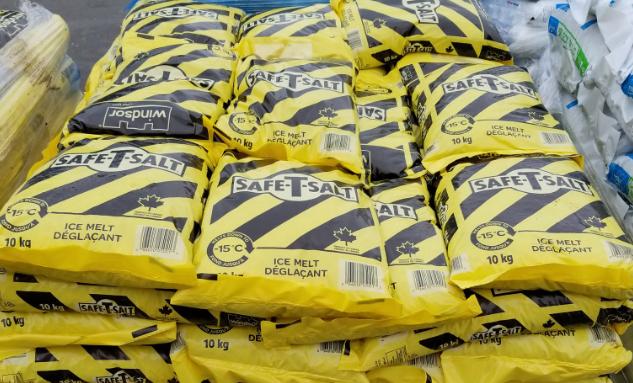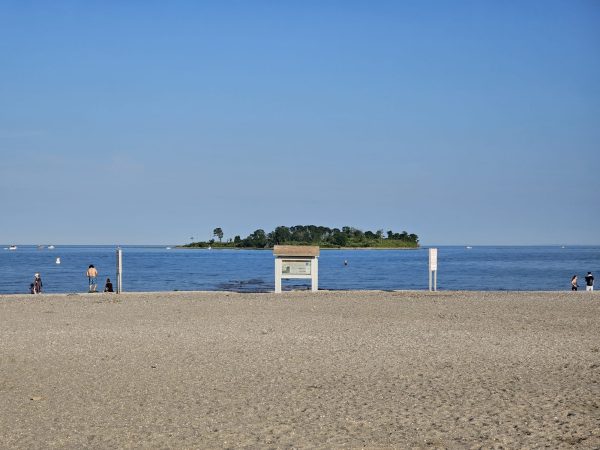The Effect of Salt on Cars
Salt In Stock: De-icing salt in stock at stores to prepare for the upcoming ice soon to cover the roads.
As the winter season proceeds, salt is being layered down on streets as a precaution. Salt lowers the freezing point of water which in result, prevents many accidents and cars from hydroplaning when snow or ice is on the road. Although it does make the roads much safer, it can lead to many troubles with vehicles.
If a car is repeatedly exposed to road salt like they are every winter, after time salt could be a very big part of why a car gets very rusty. When people drive on salty roads in the winter, they don’t think anything of it, but actually salt is being kicked up off the road onto their frame and it can sit on there until the car is washed, just eating away at the metal parts of the vehicle. Rust on a car can create problems on the hydraulics of the car and also damage to the frame. If the frame gets very rusty it can be dangerous to drive the car. A normal car has a metal frame that holds it all together. Rust can change a car’s metal to a flaky powder; for that reason, it won’t hold the car together and can lead to severe problems when driving.
Senior Andrew Kupson has taken all three Powertech classes with teacher Mr. Domaracki.
Kupson says, “I learned in Powertech that driving your car in the winter when there is salt on the ground can lead to rusting problems on the bottom of your car. The metal on the bottom of the car takes the most damage, especially the brake system on the fuel lines. If you drive in a place where it usually snows you can have unexpected car repairs from the salt.”
Domaracki says, “To prevent salt damaging your car wash underneath the car until the springtime, this will prevent the salt from deteriorating the car rinse the underneath specifically at the carwash. After heavy rain, go for a drive on the highway during the spring or summer when there is no salt spray water up on the underside of the car, but it is important to be careful when doing so.
While many people like to complain about the damages done to their cars from the salty roads, the much worse alternative of getting into an accident due to snow or ice can be exceedingly more severe.
Student driver Owen McCabe says, “I am aware that driving while salt is on the road does damage to my car’s body and underside but in a case such as this, it is necessary to keep the roads clear of ice. I would much rather deal with small problems with my car’s exterior than a serious crash risking my life.”
In a AAA news article, John Nielsen, AAA’s managing director of automotive engineering and repair, says, “In the last five years, 22 million U.S. drivers experienced rust damage to their cars due to salt and liquid de-icers. In addition to the safety risk, repairs to fix these problems are often costly, averaging almost $500 per occurrence.”
While some rust damage is unavoidable, AAA recommends drivers take the following steps to reduce the possibility of vehicle damage:
- When possible, limit driving immediately before, during and after winter storms when salt and de-icing solutions are being applied and are at their highest concentrations.
- Frequently wash your vehicle, paying particular attention to the undercarriage. This will loosen, dissolve and neutralize road salts. Many drive-through car washes offer an undercarriage rinse as an option.
- Always use a high-quality car wash solution, not a household dish detergent that will strip the wax from your vehicle.
- Repair any body damage and touch up paint scratches and chips that expose bare metal which could lead to rust.
- Before the start of winter, thoroughly wash and clean your vehicle prior to the start of winter and apply a coat of wax to protect the finish.
- Give the entire vehicle and undercarriage one last cleaning in the spring. Any deposits left over from winter can continue to cause corrosion year-round if not properly removed.
Your donation will support the student journalists of Foran High School. Your contribution will allow us to purchase equipment and cover our annual website hosting costs.

Hello, my name is Eliot Poffenberger and I am a senior at Joseph A. Foran High School. I wrestle for my high school’s team and I work as a food...

My name is Oliver Ardrey, I'm a senior at Foran High School. I'm on the wrestling and lacrosse team. I'm also a part time cashier at Rite Aid....







